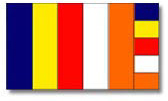The Stupa
The Stupa (Pali: Thupa) is a mound-like structure or monuments built over Buddhist relics, typically the remains of a Buddha, His disciples and other Saints. The Stupa is a symbol of enlightened mind, (the awakened mind, universal divinity) and the path to its realisation, sometimes referred to as “Spiritual Monument”.
A very good explanation of how the Stupa came into being can be read here … http://dbc.dharmakara.net/trt2-963.html
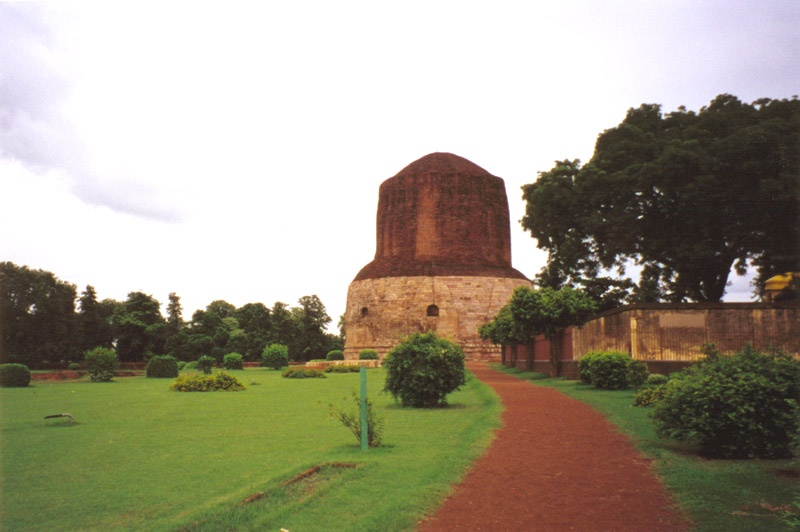
The Dhamek Stupa in Sarnath, north-eastern India is the oldest Stupa in existence.
When the Buddha attained Maha Parinibbana and ended his earthly life, and his mortal remains were cremated, his ashes – thus it has been said – were divided into eight parts and were protected by the royalties and communities, and Stupas were built over them. The eight claimants are:
-
Mallas of Kushinara
-
Ajatasatru, King of Magadha
-
Licchavis of Vaisali
-
Sakyas of Kapilavastu
-
Bulis of Allakapa
-
Koliyas of Ramagrama
-
Mallas of Pava
-
A resident of Vethadipa
During the time when King Asoka was propagating the Dhamma throughout India and its neighbouring countries, he asked his teacher Ven. Moggaliputta Tissa, “How great is the content of the Dhamma taught by the Buddha?” The Venerable replied, ” There are 84,000 sections of the Dhamma.” Then Asoka said, “Each one of them will I honour with a Stupa.” Thus he proceeded to build 84,000 Stupas in selected towns of his empire. He decided to open up the original eight Stupas and re-enshrine each minute relics in the 84,000 Stupas.
Legend has it that he was able to open up seven of the original eight Stupa and take out the relics but failed to retrieve the relics from the Ramagrama Stupa as it was being zealously guarded by a Naga King, it being the first of all Stupas. The Naga King said to Asoka, “This is the Stupa to which I bring my offerings, may the King allow it to stand?” King Asoka consented and returned to his Kingdom.
History has it that there was one other Stupa from the original eight that was not opened by King Asoka. This was the Stupa built by the Sakyas at Kapilavastu over their share of the relics of Buddha. These relics have since been discovered from Priprahwa, the site of ancient Kapilavastu, in district Basti, Uttar Pradesh.
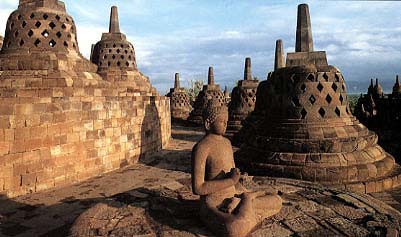
The Stupas in Borobodur Temple in Java, Indonesia. The work is regarded as a Buddhist marvel.
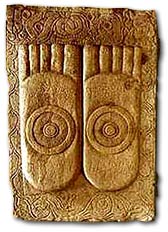


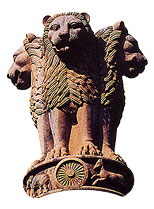 The image shows one of the many pillars of Asoka: the Lions of Sarnath. Sarnath is where the Buddha first preached, and these lions placed back to back, facing the four cardinal points (North-South-East-West), echo his teachings to the four quarters of the world, sometimes called ‘the Lion’s Roar’. The wheel or dhammacakra symbolizes Buddhist law and also Asoka’s legitimacy as an enlightened ruler.
The image shows one of the many pillars of Asoka: the Lions of Sarnath. Sarnath is where the Buddha first preached, and these lions placed back to back, facing the four cardinal points (North-South-East-West), echo his teachings to the four quarters of the world, sometimes called ‘the Lion’s Roar’. The wheel or dhammacakra symbolizes Buddhist law and also Asoka’s legitimacy as an enlightened ruler.